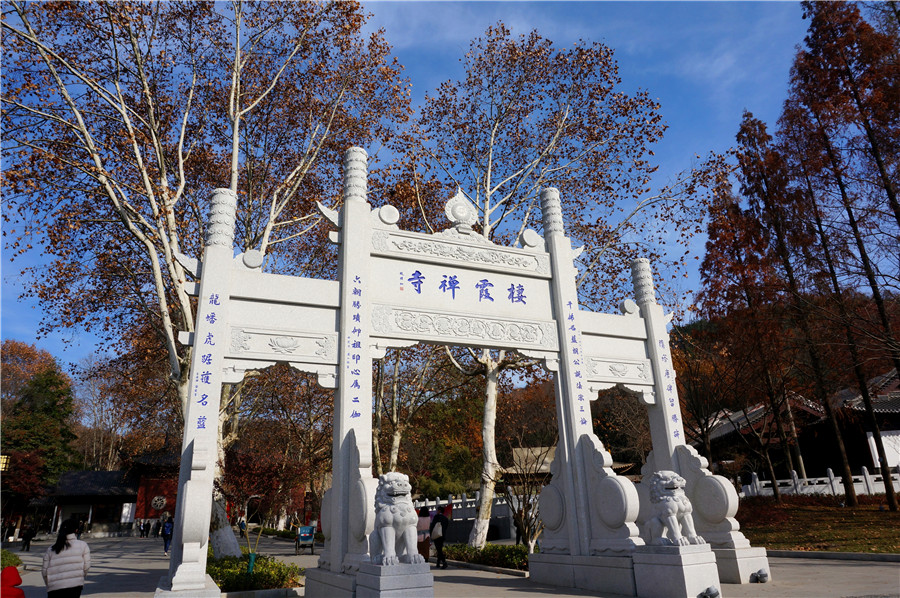The lure of fiery red maple leaves
- By Mitchell Blatt
 0 Comment(s)
0 Comment(s) Print
Print E-mail China.org.cn, January 4, 2018
E-mail China.org.cn, January 4, 2018

Every fall and early winter, Nanjing residents ascend Qixia Mountain in droves to see the fiery red and orange maple leaves on the national AAAA tourist spot.
Beijing has its Fragrant Hills, Suzhou has Tianping Mountain, Changsha has Yuelu Mountain, and Nanjing has Qixia. These are the four famous Chinese scenic spots for maple leaves. In mid-December, I went to Qixia Mountain to experience the maples close hand.
Entering the main gate, one is faced by Jinghai Temple. The temple, founded in 489, is one of the most famous in Nanjing and covers a vast expanse of the base of the mountain through various halls and relic sites. Fragrant smoke is floated skyward and incense sticks are planted in a long vessel. Nearby are scattered hundreds of ancient shrines and Buddha statues. An 18 meter-tall ?arīra Pagoda from the 10th Century still stands, around which worshippers parade and pray.
The mountain is not a tough climb. Walking up the paved roads can take a few hours, depending on how fast one goes. I was able to complete it in two-and-a-half hours. Boardwalks alongside the road appear to have been built in the past few years. Trails that lead off into the forest bring a hiker into a mass of thick trees.
The colors of the leaves are usually brilliant from late November to December, although it always depends on the weather. Fortunately, I chose the right time of year. Alongside the road, people stood in lines to take pictures under the trees one after another.
Nanjing municipal government has put much effort into maintaining the trees since 1949. In addition to maples, the government has planted horsetail pines and black pines in abundance.
As one gains elevation, the Yangtze River came into view. A high-speed train could be seen speeding along. Being a source of much trade, the Yangtze was filled with dozens of barges. Qixia district is a heavily-industrialized district as well, so factories and plants can be seen for kilometers. At the very top, the road circles around the Sanmao Peak until arriving at the gate to a television transmitter on the top.
Outside, in peak season, a vendor sells fruits, candied haws on a stick, and snacks. She said, "You came at the right time. I am moving next week. There will be fewer people."
I took a seat in an open-frame electric vehicle on the way down for ¥10. It was quite a ride. The road was steep and curving, something I hadn't noticed on the way up. On the way down, passengers in the car had to hold on going around corners. It was, as one described, a bit "like a roller coaster."
One day at Qixia Mountain made me feel rejuvenated before the rigors of the festive season at the end of the year. It's a beautiful place, and Nanjing is fortunate to have it.
Travel directions: Located 22 kilometers (13 mi) northeast of downtown Nanjing, Qixia Mountain can be reached by public bus. Taking Line 4 of the metro to Jubaoshan station, you can transfer to bus number 106 or 107. (For out-of-town travelers, bus number 106 originates from Nanjing Railway Station). Entrance tickets cost 40 yuan during peak season and 20 yuan the rest of the year.





